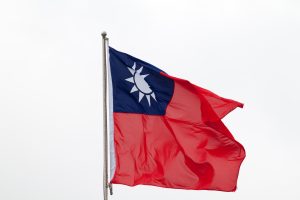Taiwan’s defense minister told reporters this week that it had begun mass producing a new long-range ground-launched missile to bolster its defenses against mainland China.
The minister and deputy director of Taiwan’s main defense research institute offered few details about the weapon, including its range, but said that three other advanced new missile designs were also under development.
Speculation that China could decide to seize the island, which Beijing has considered a breakaway province since defeated Nationalists took refuge there after China’s civil war, has intensified over the past year. The outgoing head of U.S. forces in the Pacific recently testified that China had moved up its timeline for dealing with the island and could resort to a military intervention “in the next six years.” His nominated successor subsequently told senators that “this problem [Chinese action against Taiwan] is much closer to us than most think.”
Taiwan’s air force took delivery of a new, longer-ranged version of its Hsiung Feng II (HF-IIE) cruise missile earlier this year. The new HF-IIE is believed to have a range of 1,200 kilometers, which would allow Taiwanese forces to hit targets deep in China’s mainland to counter an attack across the strait.
At the time rumors were reported that an even more capable missile was under development with ranges out to 2,000 kilometers. Taiwan conducted a series of test launches around the lunar new year. This could be the new missile that the defense minister reported has entered production, but it is not clear whether this is an entirely new missile design or another variant of the HF-II, such as a longer-ranged and ground-launched version of the new extended range missile for Taiwan’s air force.
The defense minister said of the new missiles under development, “We hope it is long-range, accurate and mobile.” Asked to confirm the effective range of the new missile, the deputy director of Taiwan’s weapons design institute said simply that it was “not convenient” to do so.
Taiwan’s approach to defense must carefully balance being robust enough to pose a credible challenge to Chinese invasion forces that might attempt to cross the 160-kilometer-wide Taiwan Strait, but not so capable that China perceives an unacceptable threat to its infrastructure and forces, motivating it to strike sooner.
Many analysts believe that Taiwan should not invest too heavily in traditional weapons systems such as fighter jets and submarines to counter the People’s Liberation Army, since the latter would always be able to marshal greater numbers of forces. Instead, they argue that Taiwan should focus on asymmetric capabilities such as mobile, ground-launched missiles that can harass Chinese invasion forces gathering on the opposite shore of the Taiwan Strait, and anti-ship missiles to target the PLA Navy’s transports.

































